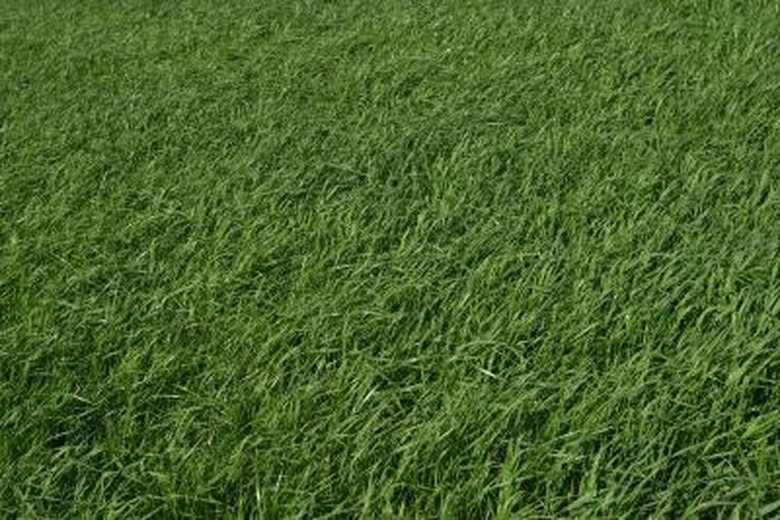How To Prep A Yard For Sod
Things Needed
- Soil test kit
- Measuring tape
- Peat or organic matter
- Tiller
- Fertilizer
- Topsoil
- Post-emergent herbicide or black plastic
- Rake
- Roller (optional)
- Hose
Tip
You can also use sod to repair bare patches in your yard. First, determine what's causing the grass there to die and fix the problem. Common problems include nutritional problems and insect pests. Till the area you need to repair and remove any dead roots, rocks and other large debris. Keeping the sides even will make it easier to measure for and install the sod.
Laying sod can provide a full, lush lawn in shorter time than growing grass from seed. When preparing to put down sod, time the placement wisely. The soil should be dry enough that you can work with it, but it should not be so hot and dry that the roots of the grass dry out. Make sure, too, as you prepare to lay sod, that you will be able to water the sod as it establishes itself, and don't place sod too late in the season, when the roots may not have time to establish themselves before temperatures drop for the winter. Correctly preparing the soil before placing sod helps establish a healthy, trouble-free lawn.
Step 1
Collect a soil sample and send it to your local extension office or a private lab for testing. Soil tests tell you if you have any nutrient deficiencies in your soil, measure the pH and determine the soil texture, all of which can affect the health of your new lawn.
Step 2
Measure the size of the area you need to sod. If you are working with an irregularly shaped space, divide the space into pieces, measure the area of each and add them together. Since you will purchase sod in square yards, divide measurements in square feet by nine to determine the amount of sod you need to order. The University of Arkansas Extension recommends ordering 10 percent more sod than the area you calculated.
Step 3
Spread peat or another source of organic matter onto the soil at a rate of 2 to 3 cubic yards per 1,000 square feet of lawn, if you have a heavy, clay or compacted soil. Organic matter improves soil structure, which helps grass roots establish, improves drainage and increases the availability of water and nutrients. Till the organic matter into the soil.
Step 4
Add fertilizers as recommended by the soil test, following application instructions on the packaging. Don't add nitrogen fertilizers at this time; wait until after mowing your new lawn for the first time.
Step 5
Till the soil to a depth of 4 to 6 inches. Try to accomplish this step before annual weeds go to seed.
Step 6
Remove any debris from the space and grade the area as needed with topsoil.
Step 7
Apply a post-emergent herbicide to control perennial weeds. For a chemical-free option, cover the area with black plastic for the season prior to establishing the sod to kill any weeds.
Step 8
Rake the soil to smooth it before applying sod. If you leave footprints deeper than a 1/2 inch when walking on the soil, you will need to go over the soil with a roller or water the soil until it firms up.
Step 9
Water the soil to a depth of 6 inches just prior to laying down the sod.
